Tour of Palais des Nations
After our amazing discussion with the United States’ delegates at the convention, some of us had the opportunity to tour the Palais des Nations (Palace of Nations), which is the home office of the United Nations (UN) in Geneva, Switzerland. Fortunately, the palace is right by the conference center where the convention is held, so we were very fortunate to be able to visit while also being engaged at the convention in one day.
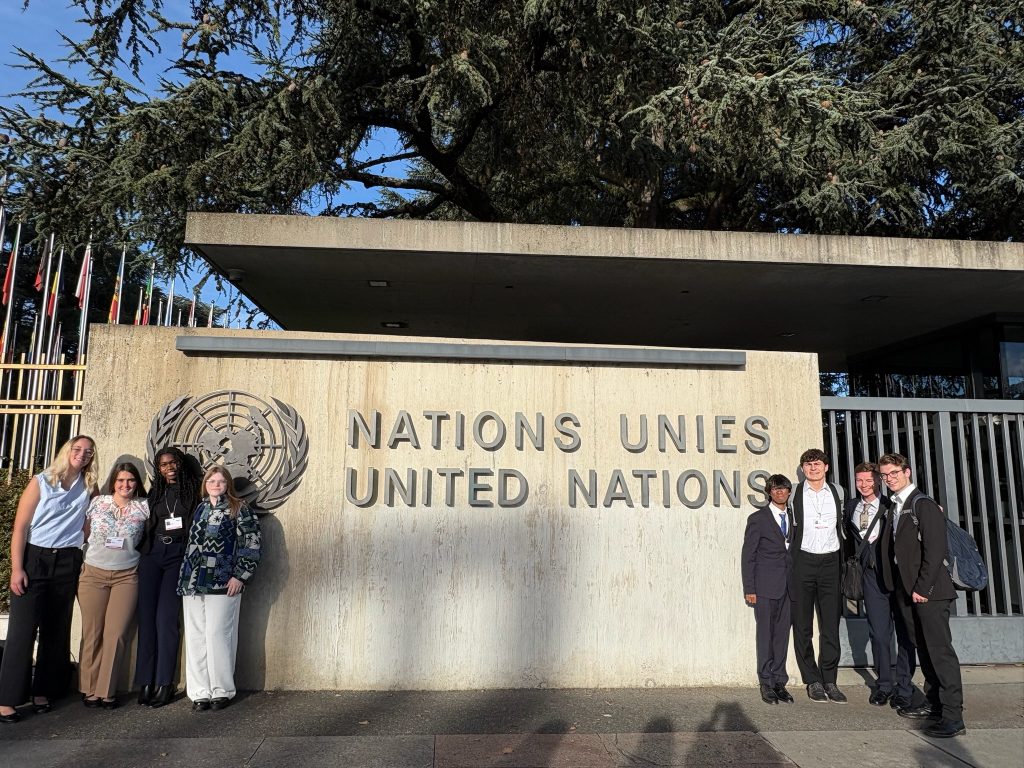
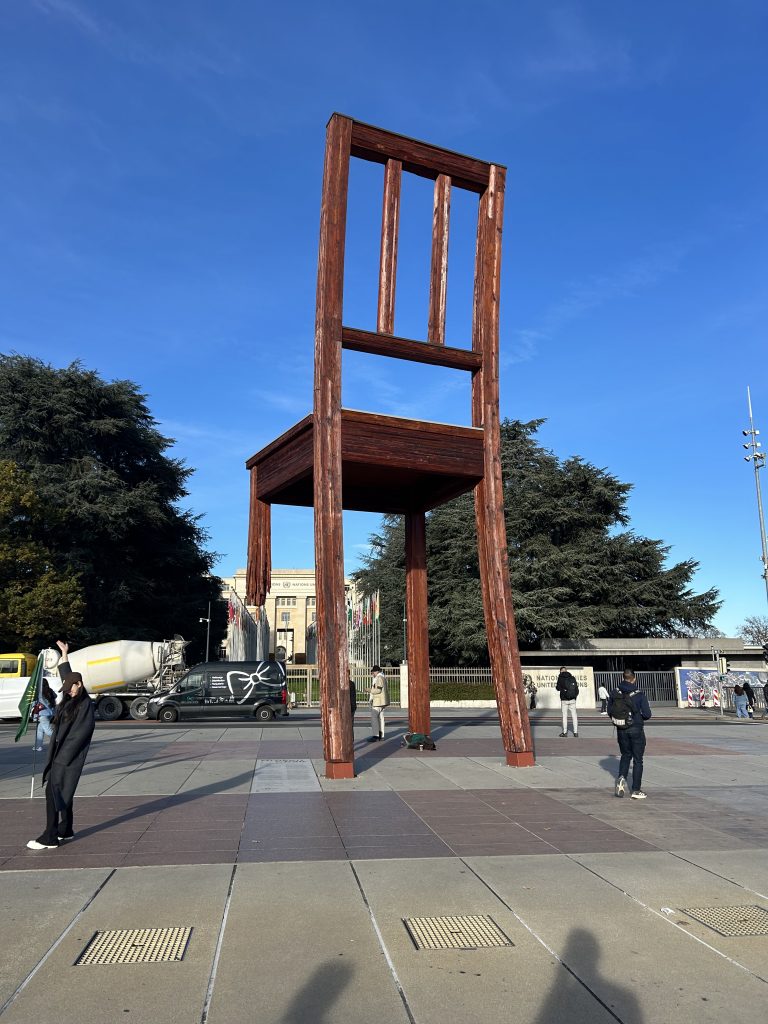

Before entering the plaza for our tour, we stopped at the main square outside, where we saw the overview of the whole building, the UN sign, the broken chair, and the rows of all the national flags that are a part of the UN across the globe.
For some background history, the building was originally designed to serve as the headquarters of the League of Nations, an organization founded after World War I to promote peace and international cooperation. The construction began in 1929 and was completed in 1938, with contributions from architects from various nations. After World War II, when the League of Nations was disbanded, the building was transferred to the newly formed United Nations in 1946 and became its European headquarters. Over the years, the building was expanded to accommodate an increasing number of UN offices and conferences. Today, the Palais des Nations remains a vital hub for diplomacy and international relations, hosting major conferences and housing several UN agencies, including the Office of the High Commissioner for Human Rights.
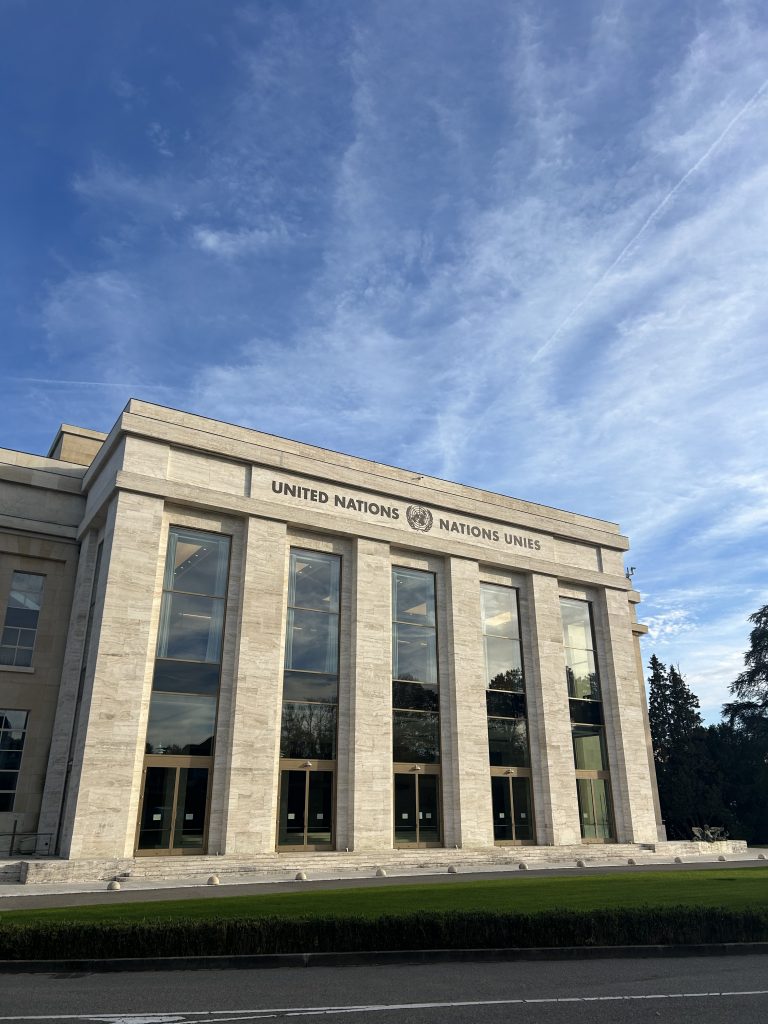
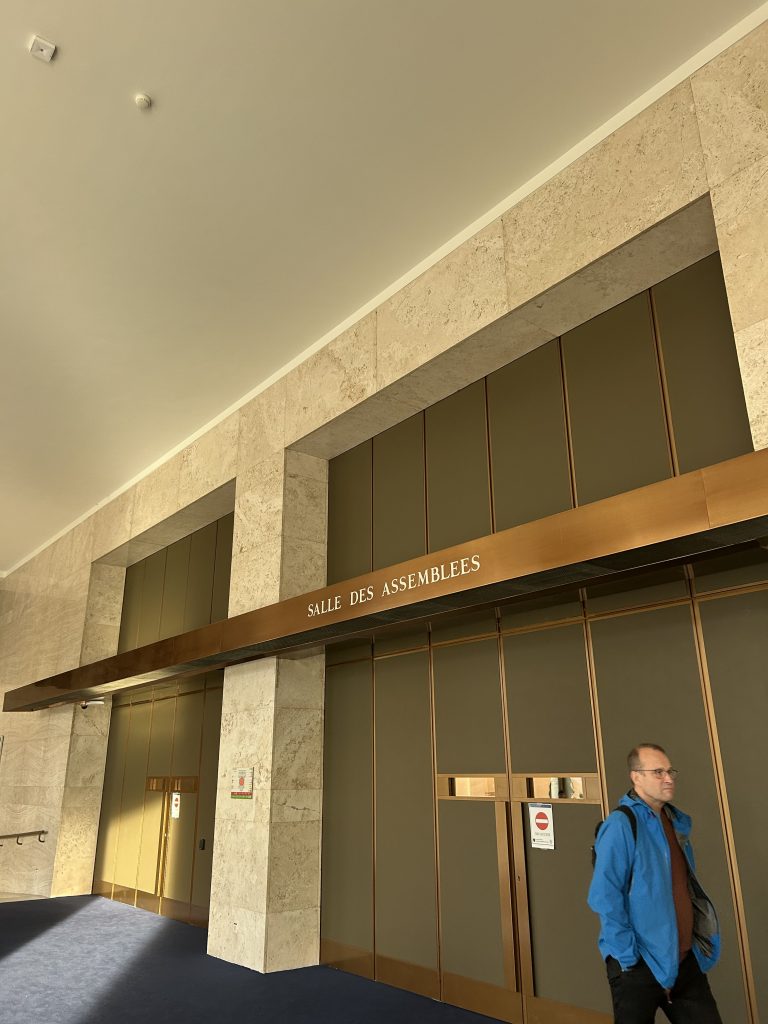
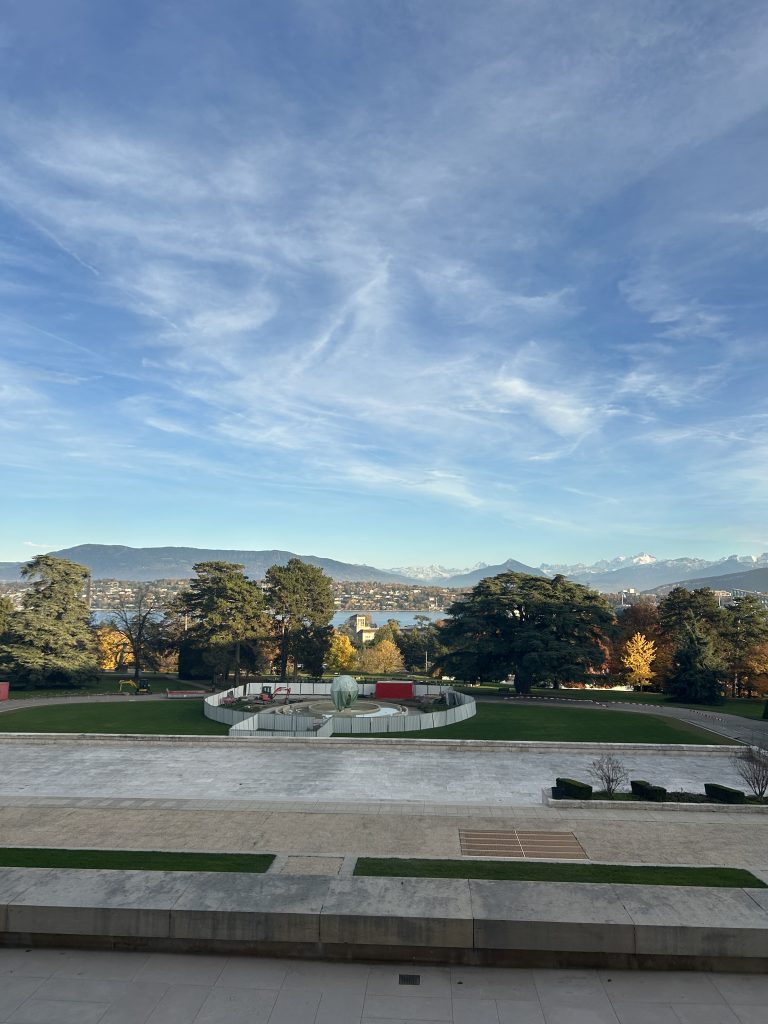


To start our tour, our guide, Sonia, took us to the main assembly room, where she explained its importance as the central meeting place for major international conferences and UN sessions. Due to privacy rights, we were not allowed to photograph the interior of the room since there was a meeting that was taking place. However, we were able to look through the windows, and it was fascinating to see the number of people representing different nations in one room. After the assembly room, we walked to the annex on the back side of the building. This room was much larger than I expected, with back windows facing Lake Geneva and the city, creating a beautiful view. Additionally, in the annex, there is a podium in the center that the UN uses to record media and other official content. For the rest of the tour, Sonia brought us to several different conference rooms that the UN uses for its meetings.
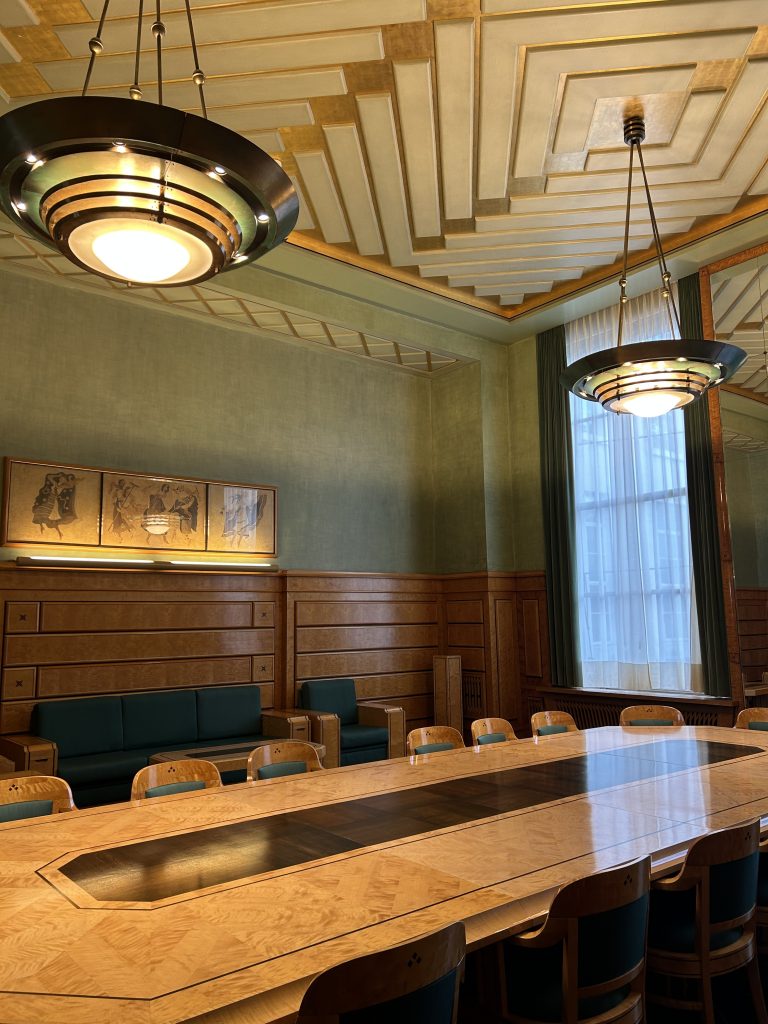
Salle X (Room 10) was the first conference room that Sonia took us to. For context, this room was designed by Aleksandrs Birzenieks from Latvia. It was donated to the Palais des Nations by the Republic of Latvia in 1938. The room has a combination of green walls and ceilings, golden-yellow furniture, and black floors and doors. Latvia renovated the room in 1993 to commemorate its 75th anniversary of independence by donating new furniture, including a conference table and seating, allowing the room to be used for meetings and receptions. It was fascinating to sit in this room, surrounded by the green walls, the elegant wooden table, and the comfortable chairs.
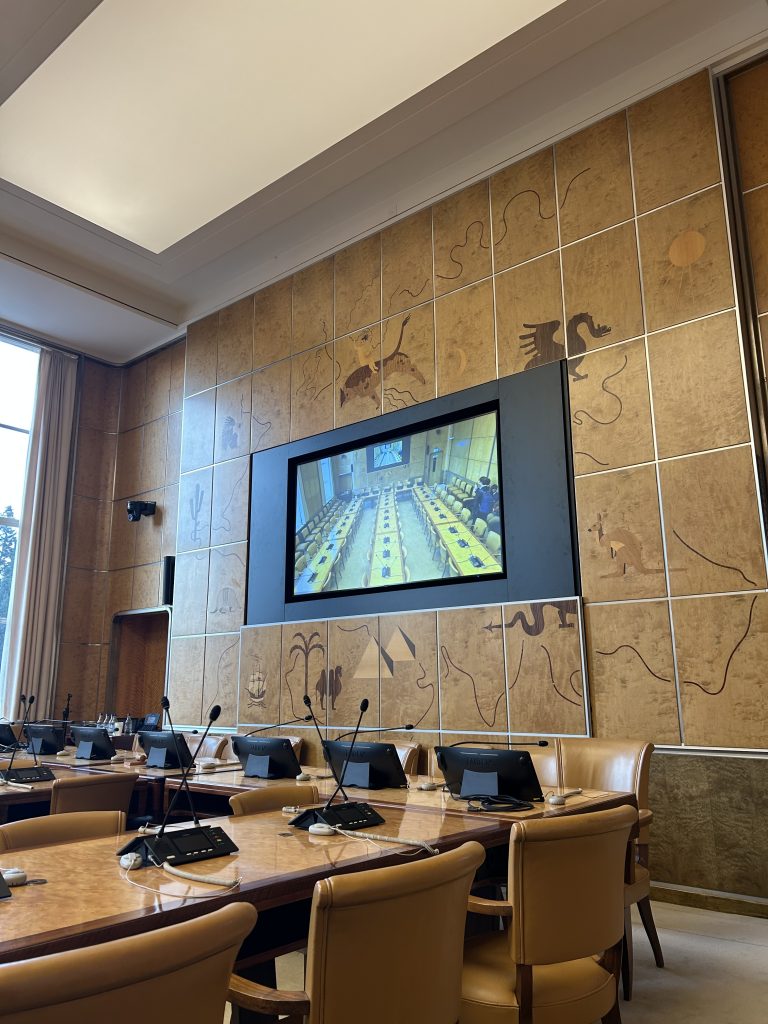
Salle VIII (Room 8) was another notable conference room that Sonia took us which I thought was interesting. It was designed by Jacob Petersen from Denmark. The main wall features an impressive world map in marquetry, with figures representing different regions. The artist used the natural patterns of the wood to resemble the different animals. The projection screen is discreetly placed behind a removable marquetry panel to preserve the room’s main decoration.
Additionally, since this room had microphones and headsets, Sonia talked about how the UN uses translation for all representatives to hear in their own language. For the main languages (English, Spanish, French, and Russian), they have two translators each who rotate every 30 minutes during meetings. For other languages (Chinese, Arabic, etc.), they have only one translator, so it is much more difficult to translate in those languages. However, the UN is currently working on how to use artificial intelligence for future translation to give everyone full translation, which I believe is a very smart idea, with how much artificial intelligence has impacted today’s age.
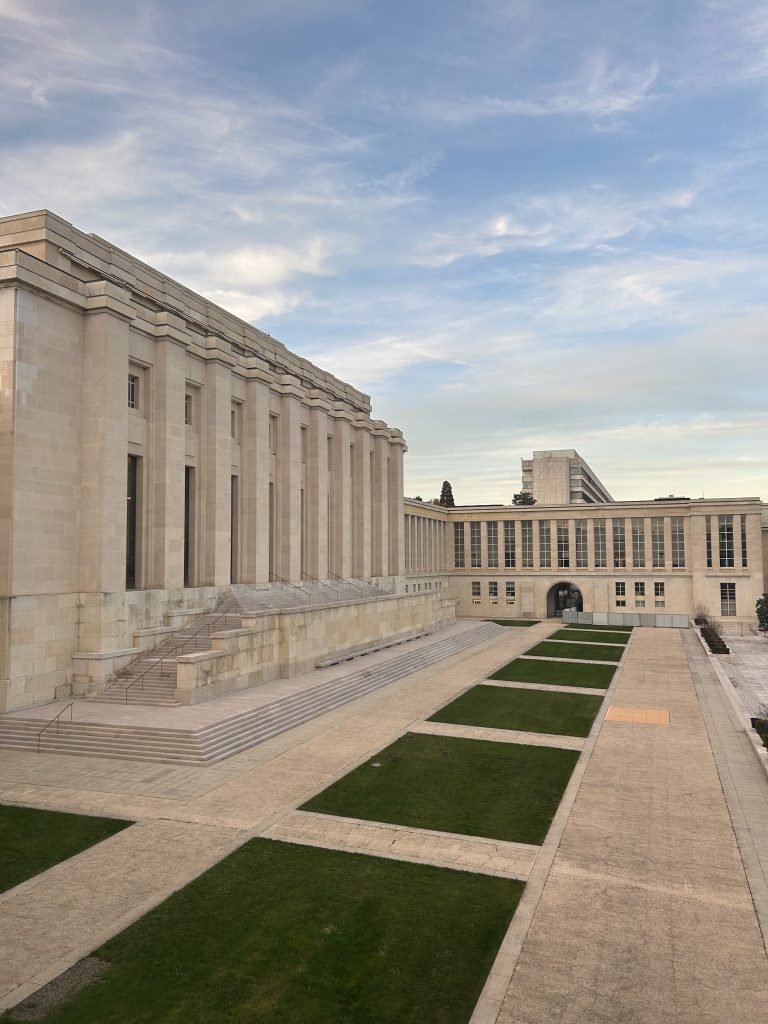
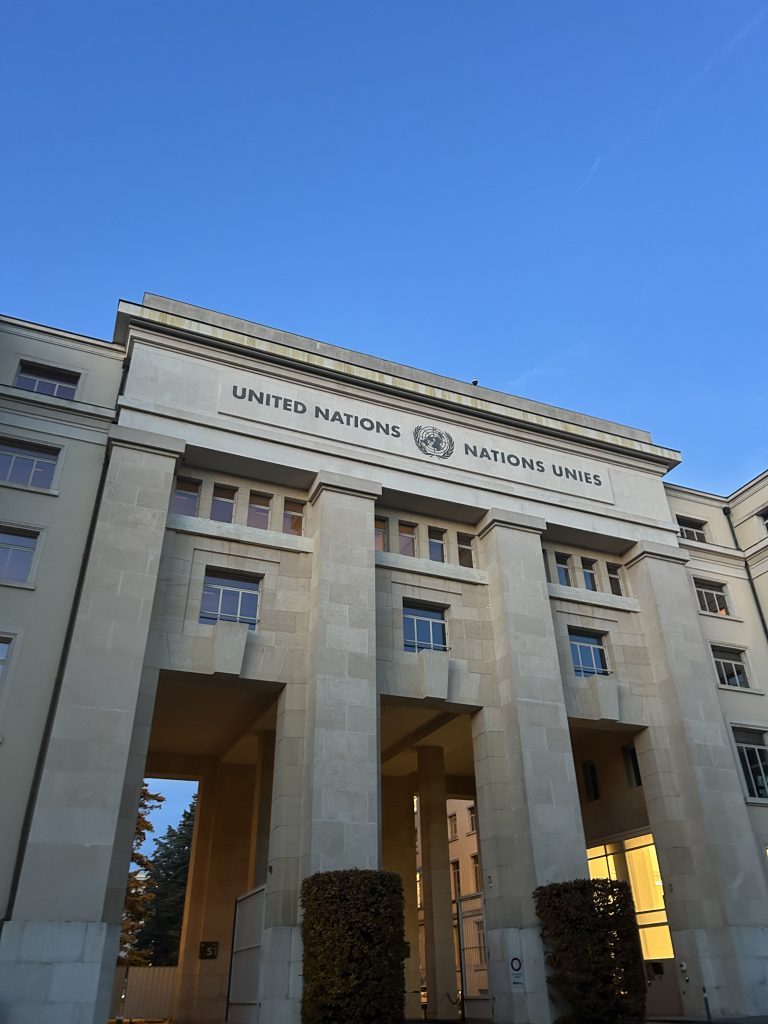
Finally, we got a view of the palace courtyard through the large windows, which allowed us to appreciate just how large and beautiful the building was. After our tour ended, we went outside, where we could see the exterior of the building before exiting the complex and returning to the convention. Overall, we found the tour of the Palais des Nations to be a fantastic experience. It provided us with a better understanding of the history and international significance of the United Nations in Geneva.
Evening Contact Group Meetings

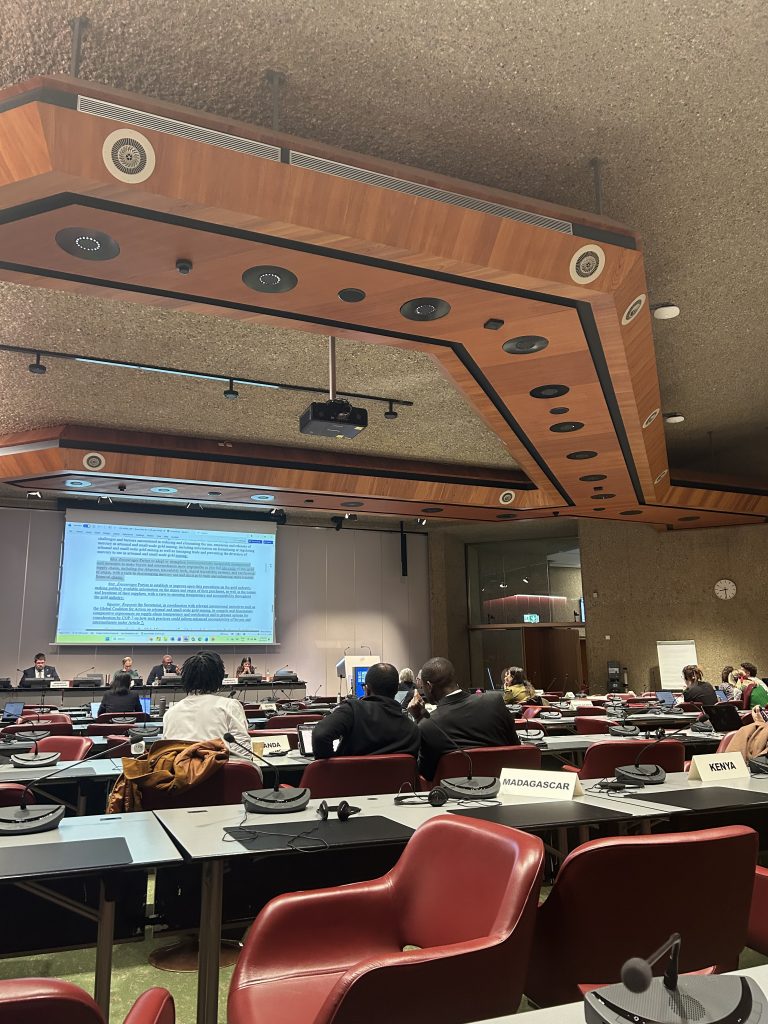
After our dinner from Domino’s, we attended the evening contact meetings after the afternoon plenary. There were two that took place: Technical Matters (left photo) and Artisanal & Small-Scale Gold Mining (ASGM) (right photo).
Starting with the technical matters, the main issue that was being discussed was the phase-out deadline for vinyl chloride monomer (VCM) production. Due to the conference room paper (CRP) on VCM production, the phase-out deadline was listed as 2032, indicating that all parties need to prohibit all VCM production that utilizes mercury to reduce emissions. To start, China was the main country that had a huge complaint about the deadline, as they wanted to extend it. However, Norway and the United States (and other parties) all wanted to force the deadline to be 2030, giving China less time to reach the deadline. This would put more pressure on China to start focusing on VCM alternatives. Unfortunately, China did not agree to move the deadline, stating that its current regulations would prevent it from meeting it. The United States had a huge problem with China’s statement since China already has three full facilities that are using mercury-free VCM alternatives. This shows that it is feasible for China to meet the deadline since they are already starting to make changes. Overall, this was a huge debate between China vs. Norway, the United States, and other parties on deciding the optimal phase-out deadline for VCM.
On to ASGM, the main issue that was being discussed was the language being used in the CRP. Brazil was the country that drafted the CRP strictly for ASGM, so the meeting was mainly between other parties questioning and convincing Brazil to change the language being used. Unlike the technical matters, this contact group meeting had fewer parties attending and was less tense. The United States was the first country to start debating the language. From meeting the United States’ delegates in the early afternoon, it was fascinating to see how Andrew Clark (U.S. Chief for Chemicals, Air Quality, & Waste and U.S. alternative delegate) was able to convince Brazil and other parties to agree on his recommended changes to the CRP. In addition to the United States, Uganda, the United Kingdom, Switzerland, and the European Union were other parties that joined in advising changes. Fortunately, Brazil was very optimistic and open in revising its own CRP and was willing to listen to other parties’ perspectives on ASGM. Because of that, this meeting went very smoothly as all attending parties were able to finalize revisions to the CRP.
Conclusion
Visiting the Palais des Nations and attending the evening contact group meetings made this afternoon truly special. I feel fortunate to have gained so many insights in one afternoon, and I’m excited for our upcoming visit to CERN and our final day at the convention.
Until next time, Landon York